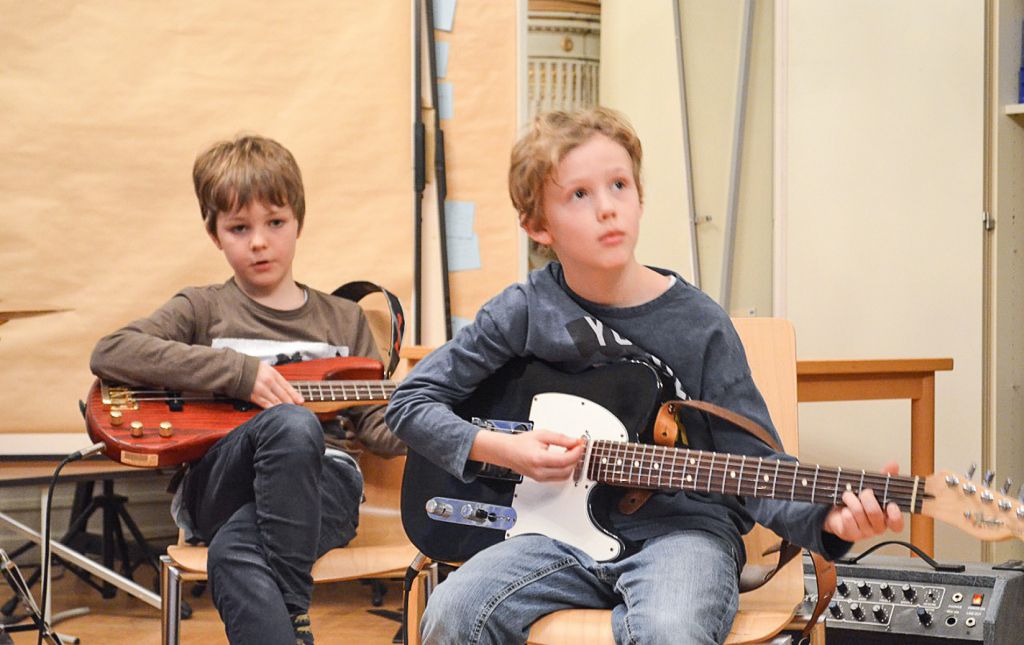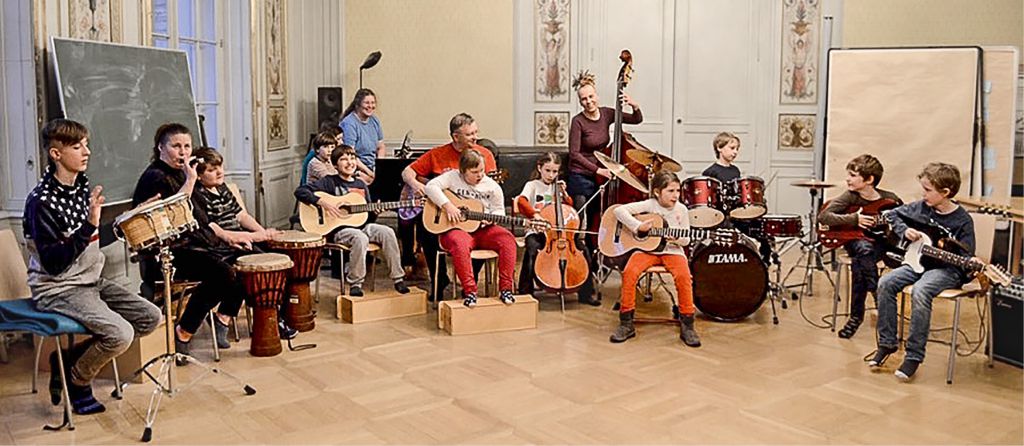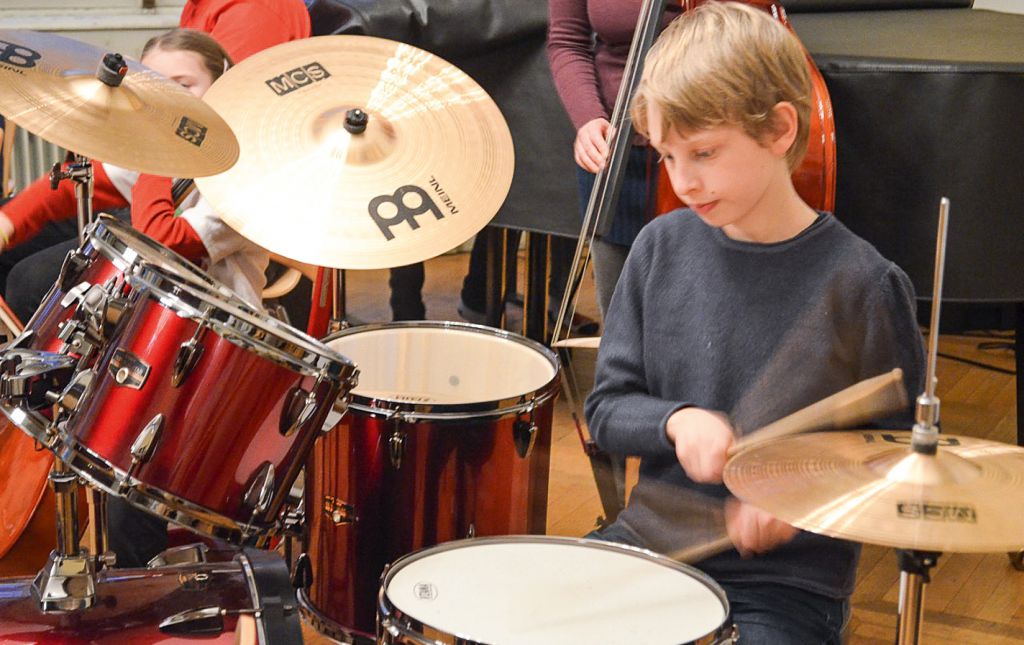For several years now, an integrative music group for young adults with and without disabilities has been making music at the mdw. And in October of 2017, this project was expanded by a new band for children—the mdw Young All Stars Band.
“The cool thing about the band is that you’re together with so many other kids—and I can choose what instruments I play.” Gabriel is one of this band’s twelve child members, of whom four have a diagnosed disability. “Fundamentally, our courses are open to all people. But I got the idea of starting an inclusive band specifically for kids following a lecture by Georg Feuser at the conference on inclusion that we held back in March 2017,” recalls Veronika Kinsky, deputy head of the Department of Music Education Research, Music Didactics, and Elementary Music Education (IMP). Since realising the project of an inclusive kids’ band would have been a bit much for one person alone, she brought her colleague Eva Königer on board, and Mario Smetana arrived to enrich the team later on. This educational offering is geared to kids between seven and twelve years of age and represents an opportunity to build upon what’s taught in the other elementary music-making courses. “Some kids come from the Kompositionswerkstatt [Composing Workshop], while others come from the elementary music-making courses for younger children, and a couple have even been with us since the child-parent courses,” explains Eva Königer. “For kids who prefer broad-based, holistic music making, this offering is ideal. And it’s at this age that they develop a need for a more tangible outcome, so they’re happy when our rehearsing together gives rise to a new piece of music … one that they can bring back to life again and again.”

Much like in the elementary music-making sessions, the kids here have the latitude to go off on their own sonic expeditions. And they’re given opportunities to develop their own lyrics, rhythms, melodies, and sounds, realising their own personal musical expressivity together with their peers—be it through music-making as such or other forms of expression like physical movement, acting things out, or visualisation through activities like painting. The esteeming and considerate interaction that goes on between the kids continues to impress these two educators today: “We’ve never seen one kid get impatient because another kid needs more time, nor has it ever been necessary to give anyone a talking-to. They’ve always been considerate and supportive of their own accord.”
The participation of kids with disabilities enriches not only these kids themselves, but also their environments. Even if they may not succeed quite as fast as others at certain activities or if the places they’re starting from are different, they likewise bring something to the table from which others can benefit. The educators agree: “Sometimes, these groups give rise to very special moments of music-making where we all connect by giving ourselves over to playing and singing, where the issue of who’s subject to what particular preconditions is really just irrelevant. What’s there is simply the music: it’s there for all of us, we give rise to it as a group, and it provides us with joy in our togetherness.”

The kids’ parents are especially appreciative of the educators’ dedication, acknowledging their work with very appreciative feedback. “The mothers of two kids with disabilities who called us on the phone were overjoyed that their children would be able to participate,” remembers Kinsky.
For the mdw students involved in teaching this band and its members, its often a big leap into cold water. This band project enables three of Veronika Kinsky’s students and three of Eva Königer’s to complete the compulsory course Didaktische Grundlagen der Elementaren Musikpädagogik [Didactic Foundations of Elementary Music-Making]. By gaining experience with proximity and distance, they learn to perceive their own limits as well as to insist that these limits be respected. Their teachers stand by them, here: “One needs to encourage the students to talk about everything so that they end up having the confidence to draw their own boundaries. After all, none of them should have to endure anything that they find unpleasant,” explains Eva Königer.

One of the biggest challenges for the students lies in the disparities between the needs that exist. While one child might be given to loud expression, another one may have a need for calm. “Every child, every person, is a universe unto him- or herself—and the more diverse one allows a group to become, the more challenging it is to create an environment that works for all of them,” explains Königer. The children are likewise confronted with these disparities: to some of them, it may seem unusual at first how “Marie” runs all around the room and has difficulty doing things together with others while “Paul” sits off to the side and covers his ears.
Pity is one of the themes that students bring up when engaging in reflection together with their instructors. Over the course of the semester, however, these future music educators end up experiencing something that permits a feeling of pity to transform into a different kind of perception: it’s the process of realising that people with disabilities bring along qualities in terms of which they undeniably outshine others—qualities like resilience, patience, and an unshakeably positive attitude towards life.

